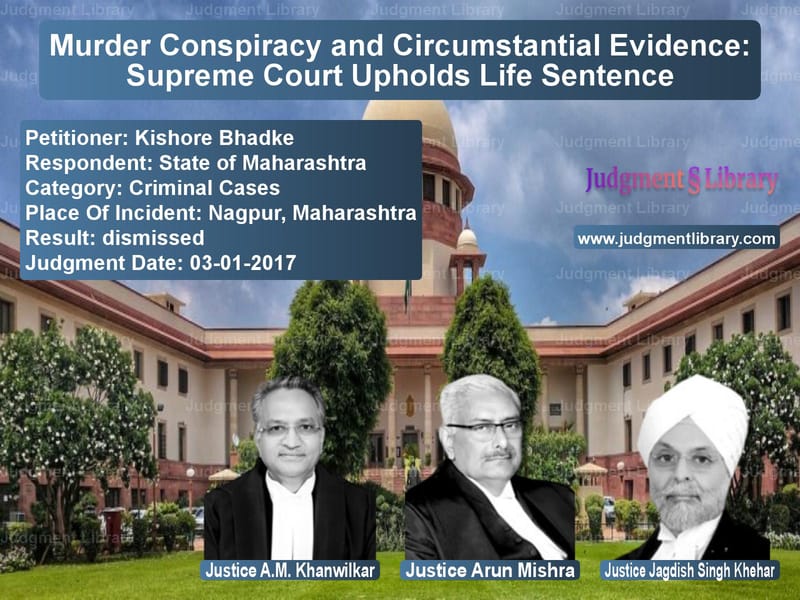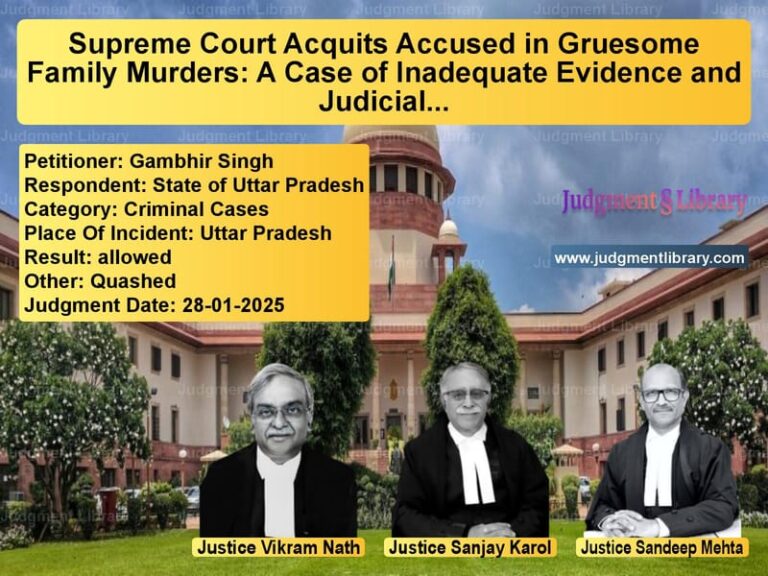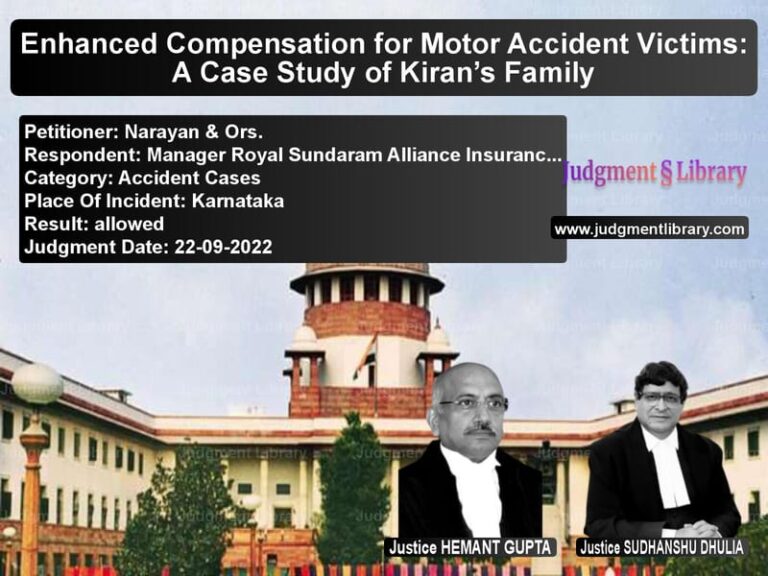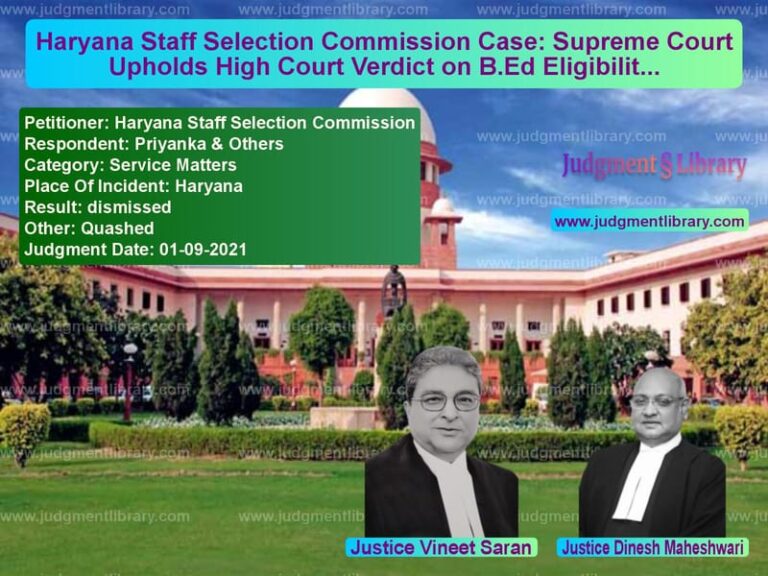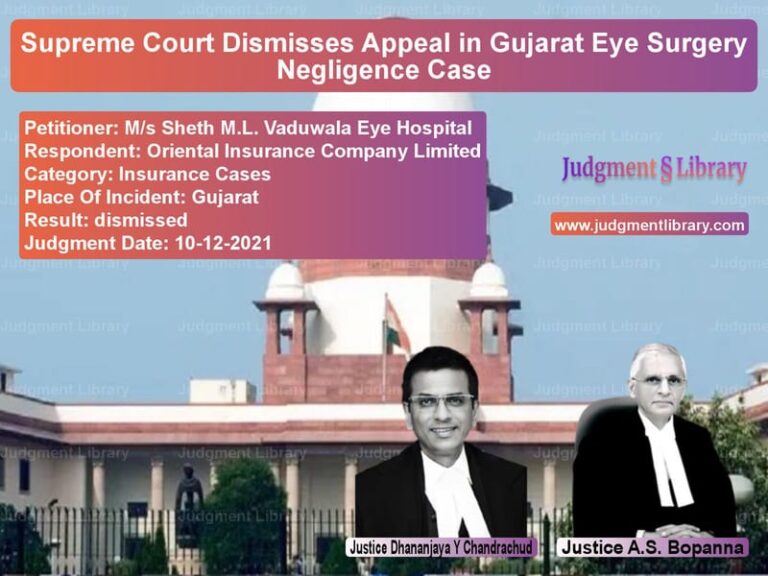Murder Conspiracy and Circumstantial Evidence: Supreme Court Upholds Life Sentence
The Supreme Court of India, in the case of Kishore Bhadke vs. State of Maharashtra, upheld the conviction of the appellants for their involvement in the abduction and murder of Raman Tonpe. The case was based on circumstantial evidence, involving multiple accused persons charged under Sections 364, 302, 201 read with 34/120-B of the Indian Penal Code (IPC). The verdict reinforced the significance of motive, last-seen theory, and forensic evidence in cases lacking direct witnesses.
Background of the Case
The case dates back to May 8, 2003, when Raman Tonpe went missing. His brother Shriniwas lodged a missing persons report at Narkhed Police Station, Maharashtra. The next day, another brother, Madan Tonpe, filed a report suspecting that Nalini Dhapke (Accused No.1), her husband Vijay Dhapke, and others had abducted Raman with the intention of killing him. The police investigation uncovered a plot where Raman was strangulated, his body transported in a gunny bag, and dumped in a valley near Deona Darshan Point.
The prosecution relied on confessions by some of the accused, forensic evidence, and witness testimonies. The trial court convicted the accused based on the circumstantial evidence, sentencing them to life imprisonment. The High Court affirmed this judgment. The matter reached the Supreme Court through criminal appeals filed by the accused.
Arguments by the Appellants
- The appellants contended that the case was based purely on circumstantial evidence, lacking direct proof of their involvement.
- They argued that the prosecution failed to establish a complete chain of events linking them to the crime.
- The defense raised doubts about the credibility of witness testimonies, particularly regarding the last-seen theory.
- They challenged the admissibility of their alleged confessions and recoveries of evidence, claiming procedural lapses.
Arguments by the Respondents
- The State of Maharashtra argued that the circumstantial evidence was strong enough to establish the guilt of the accused beyond reasonable doubt.
- They highlighted that the accused had motive—land disputes and financial disagreements with the deceased.
- Witnesses had last seen Raman with the accused, and forensic evidence corroborated the prosecution’s theory.
- Discovery of the dead body and burnt articles at locations identified by the accused strengthened the case against them.
Key Observations by the Supreme Court
- The Court emphasized that circumstantial evidence, if forming a complete chain, can be as conclusive as direct evidence.
- The accused had been last seen with the deceased at the house of Nalini Dhapke, where he had gone with a substantial amount of cash.
- Forensic analysis confirmed that the remains found in the valley belonged to the deceased.
- Non-explanation of blood-stained clothes and recovery of valuables belonging to the deceased at the instance of the accused pointed towards their guilt.
Final Judgment
The Supreme Court upheld the life sentences of the accused, stating:
“The prosecution has successfully established a complete chain of circumstantial evidence. The sequence of events and recoveries lead to an inescapable conclusion that the appellants were responsible for the crime.”
The Court dismissed the appeals, directing that the convicted appellants who were on bail should surrender immediately to serve the remainder of their sentences.
Significance of the Judgment
This ruling has far-reaching implications for criminal jurisprudence in India:
- It reaffirms the principle that circumstantial evidence, if well-founded, can result in conviction.
- The case highlights the importance of motive and last-seen theory in criminal trials.
- It strengthens the judicial precedent that destruction of evidence does not weaken the prosecution’s case if other factors establish guilt.
- The ruling acts as a deterrent against conspiracy to murder, emphasizing stringent judicial scrutiny in such cases.
Conclusion
The Supreme Court’s decision in Kishore Bhadke vs. State of Maharashtra sets a strong precedent in cases relying on circumstantial evidence. It reinforces the role of motive, forensic findings, and last-seen evidence in securing convictions. By affirming the trial court and High Court’s rulings, the apex court ensured justice for the victim while upholding the principles of fair trial and evidentiary analysis.
Don’t miss out on the full details! Download the complete judgment in PDF format below and gain valuable insights instantly!
Download Judgment: Kishore Bhadke vs State of Maharashtra Supreme Court of India Judgment Dated 03-01-2017.pdf
Direct Downlaod Judgment: Direct downlaod this Judgment
See all petitions in Murder Cases
See all petitions in Judgment by A M Khanwilkar
See all petitions in Judgment by Arun Mishra
See all petitions in Judgment by Jagdish Singh Khehar
See all petitions in dismissed
See all petitions in supreme court of India judgments January 2017
See all petitions in 2017 judgments
See all posts in Criminal Cases Category
See all allowed petitions in Criminal Cases Category
See all Dismissed petitions in Criminal Cases Category
See all partially allowed petitions in Criminal Cases Category

